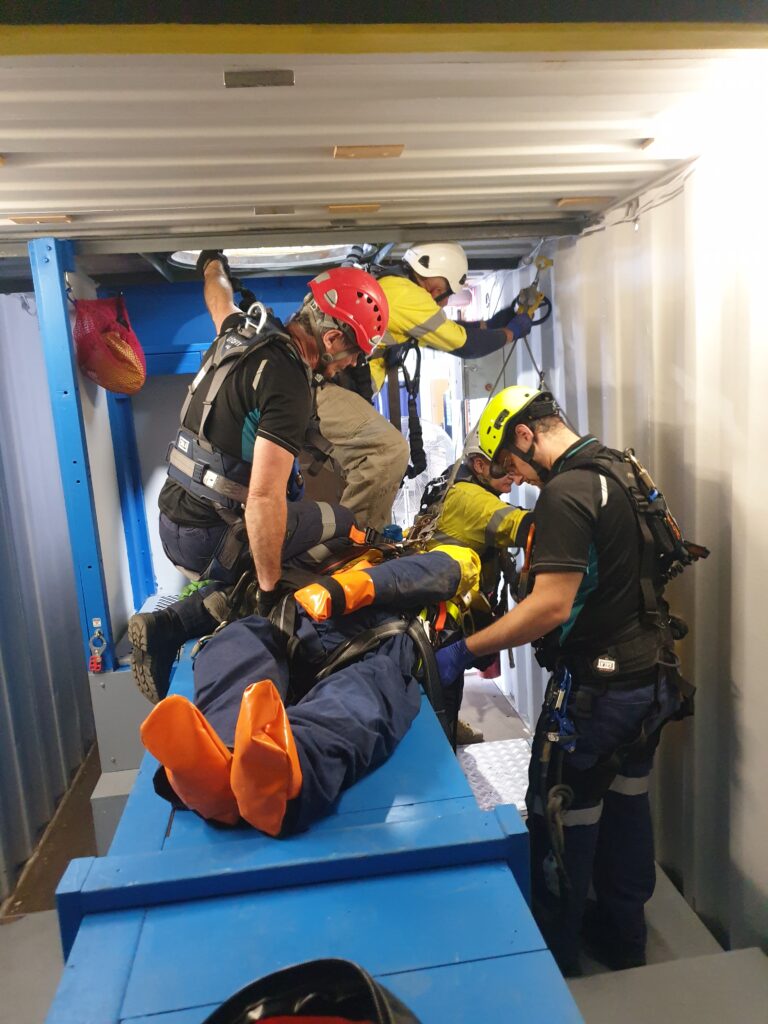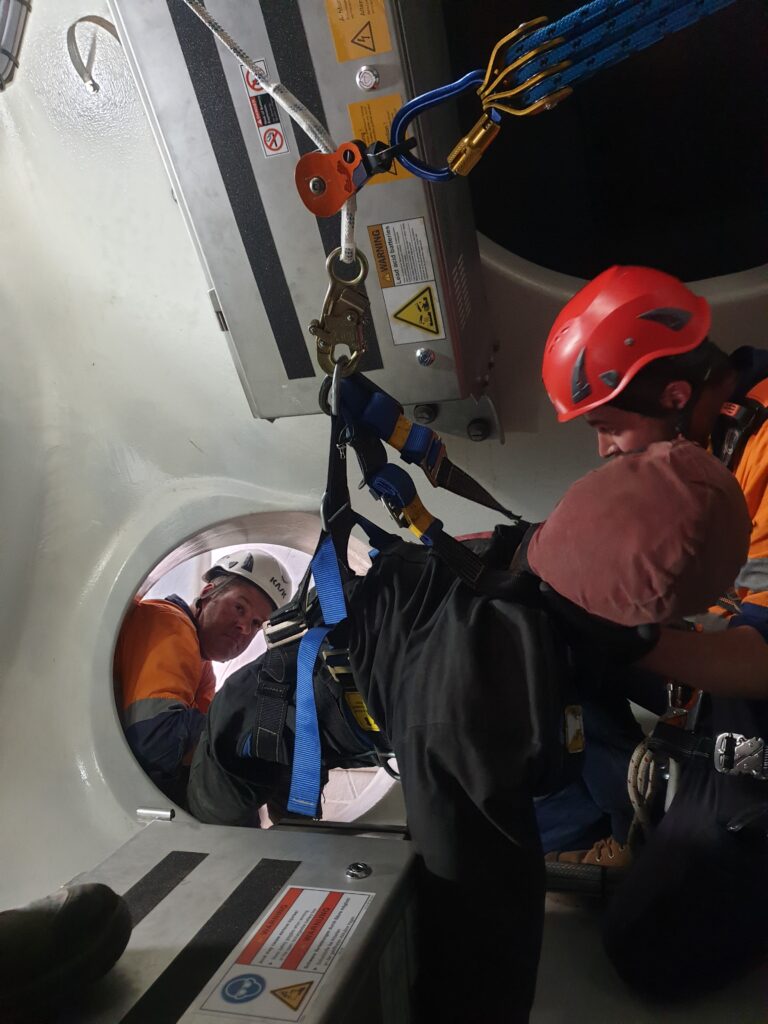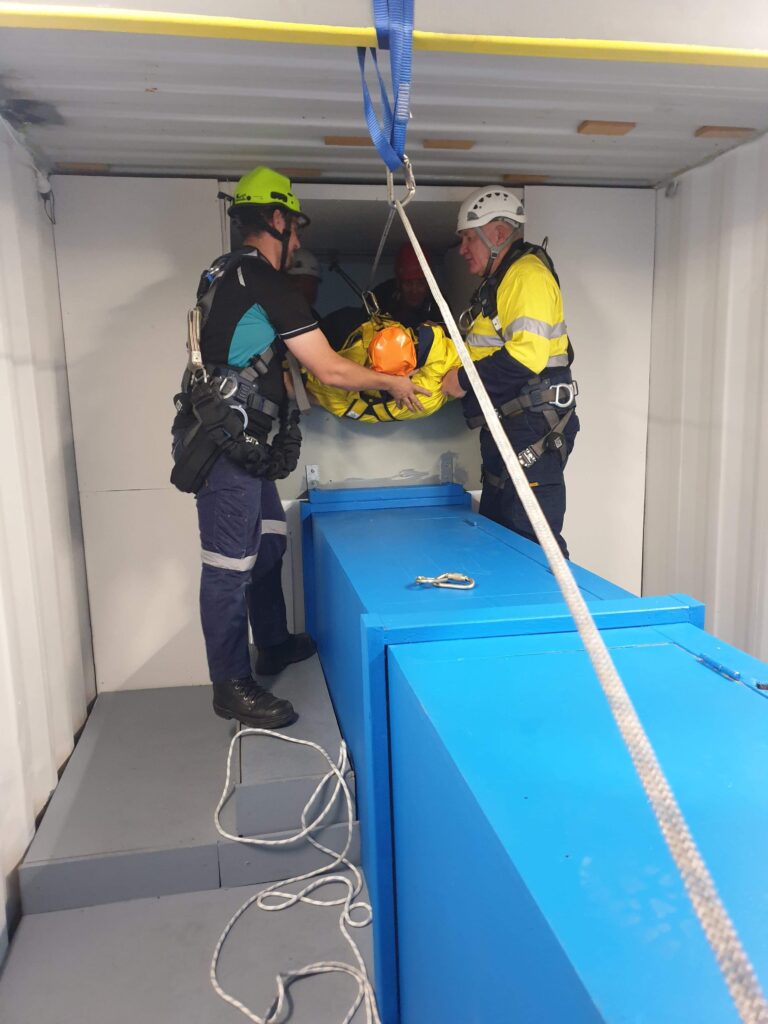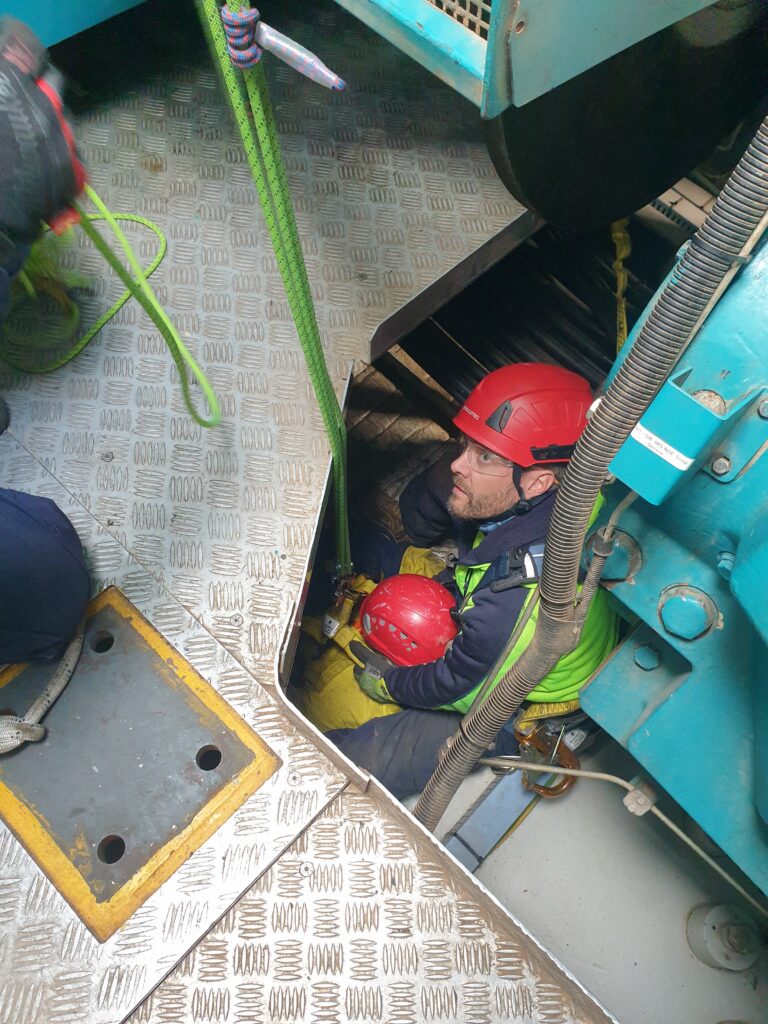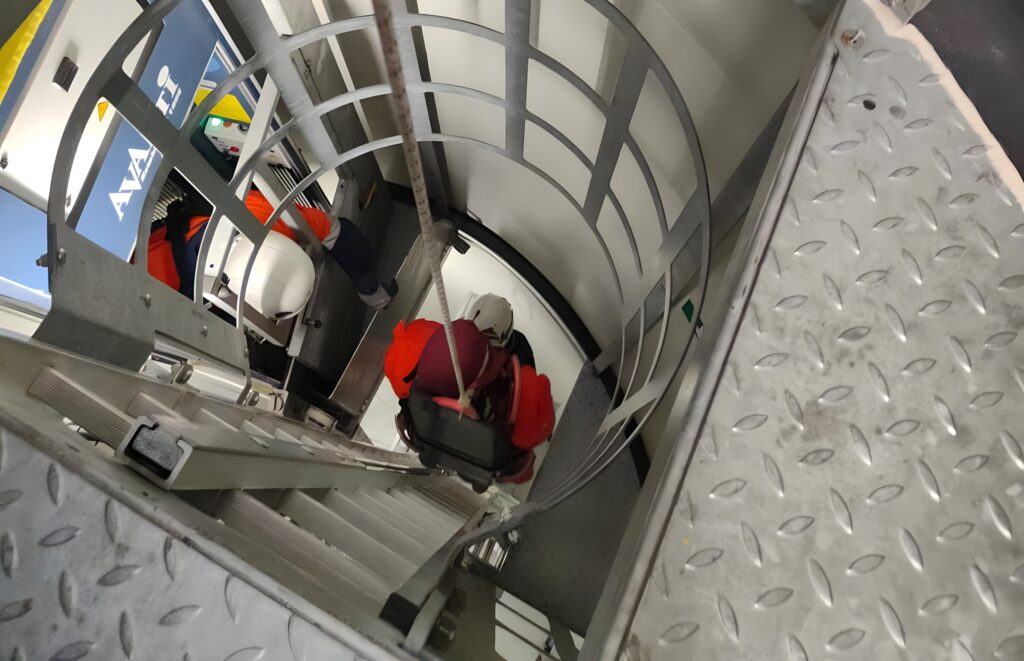COURSES > Global Wind Organisation Safety (GWO)
Global Wind Organisation Advanced Rescue TRAINING
GWO Advanced Rescue Training helps employers reduce common emergency rescue hazards associated with wind turbines.


Individuals, Small groups or Corporate bookings

ACT, NSW, NT, QLD, SA, TAS, VIC, WA

3 days

$1,695.00
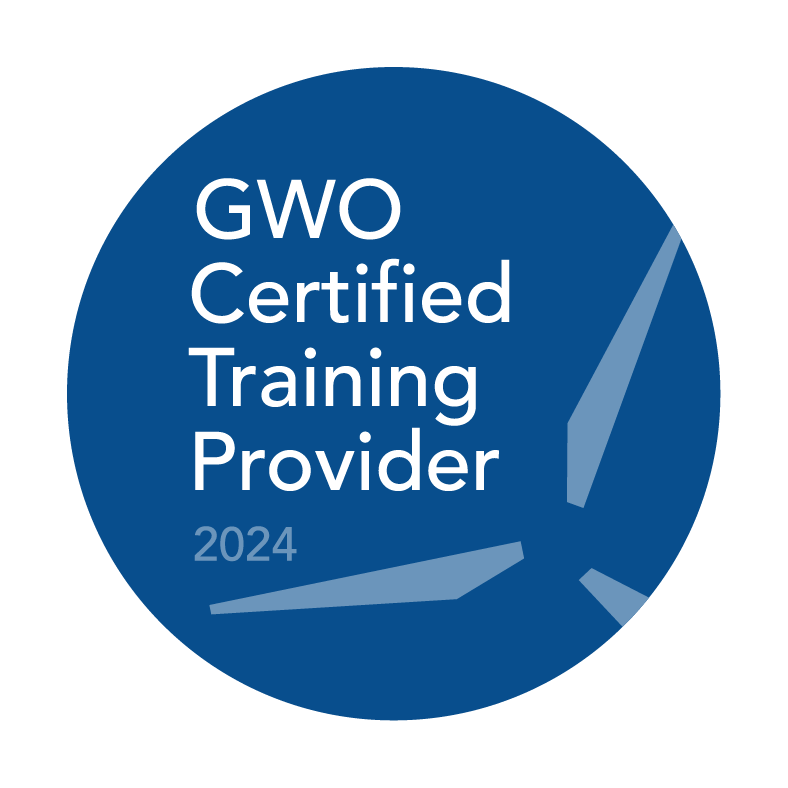
Wind turbines are often located in remote areas, both offshore and onshore, far from medical facilities. As the time for professional emergency responders to arrive increases, wind turbine personnel need to be highly self-reliant in emergencies. This course ensures that teams are prepared to handle emergency situations, especially when professional help may struggle to reach the nacelle of modern, taller turbines.
This course is ideal for:
The GWO Advanced Rescue Training (ART) course prepares wind turbine personnel to handle emergency rescue situations, especially in remote areas. The training helps employers mitigate common wind turbine emergency rescue hazards, ensuring safety and efficiency in challenging conditions.
GWO Advanced Rescue Training supports the employer by mitigating numerous common wind turbine emergency rescue related hazards, included but not limited to:
GWO recommends that decisions concerning the ratio of AR trained personnel is based on the employer’s risk assessment and work specific characteristics. The basic elements to consider when determining the ratio of AR trained personnel are:
The reasonably expected support of professional emergency responders, including availability of personnel trained for heights and their reasonable expected response time. The guiding principle when determining the required amount of trained staff, is that the emergency response time of a trained Emergency responder should be as small as is reasonably possible. In other words, if training additional employees in advanced rescue provides a significant reduction in response time, then GWO advices to train those additional employees. To implement GWO ART, the employer will need to have the following:
On successful completion of the training you will receive a GWO ART Certificate of Attendance
N/A
